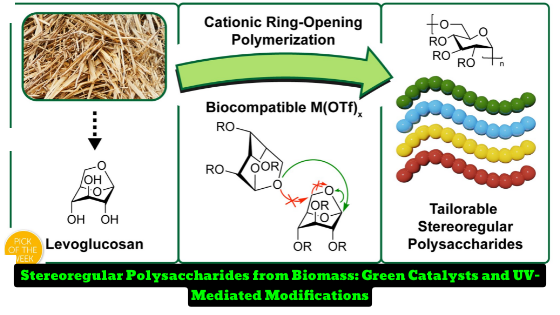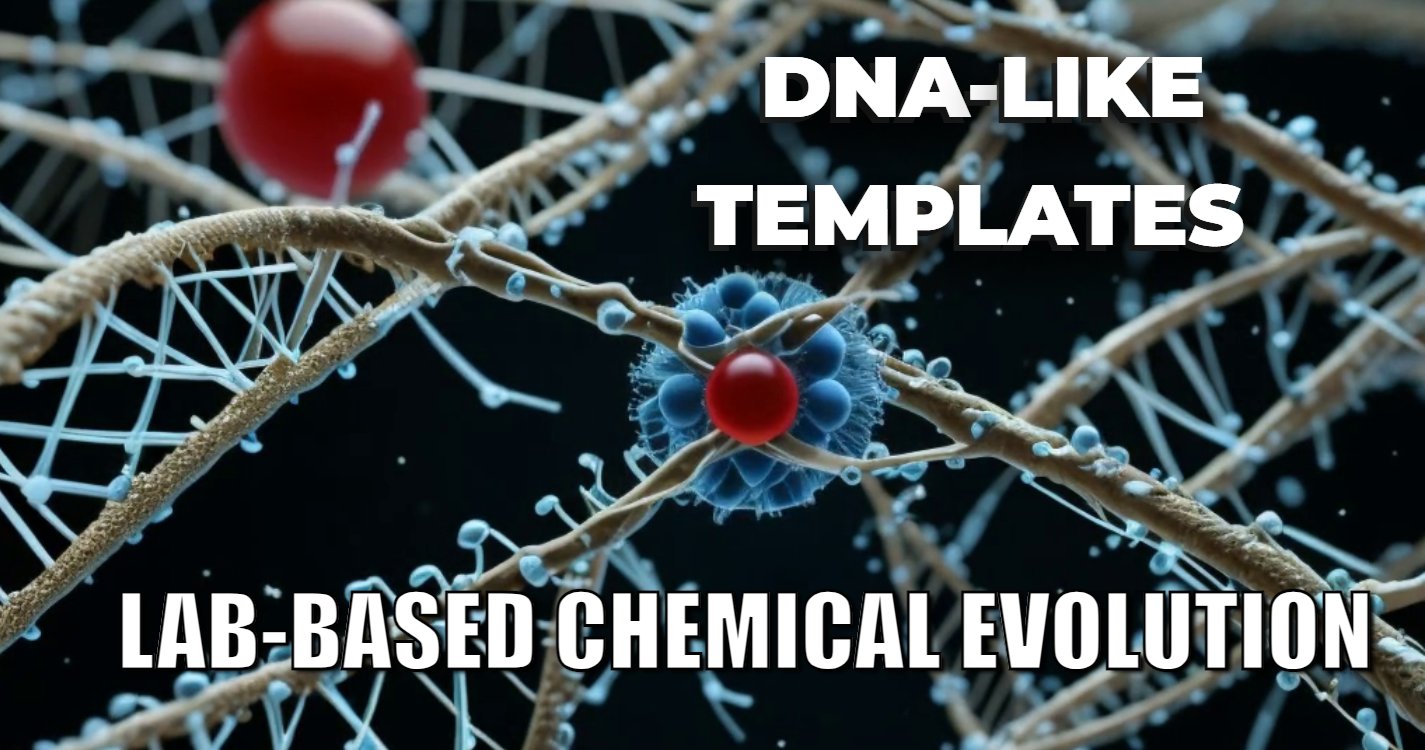A team of researchers has developed a synthetic platform for producing highly stereoregular polysaccharides with 1,6-α glycosidic linkages from levoglucosan, a cellulose-derived compound. The resulting polymers have excellent thermal stability and a wide range of tunable thermal properties. This research paves the way for future development of sustainable and biocompatible polymers with tailored properties.
Outcomes:
- Researchers developed a synthetic platform for highly stereoregular polysaccharides from levoglucosan.
- Polymers have excellent thermal stability and a wide range of tunable thermal properties.
- This research paves the way for future development of sustainable and biocompatible polymers with tailored properties.
The researchers used cationic ring-opening polymerization (cROP) to synthesize the polysaccharides under mild conditions without the need for energy-intensive processes. Post-polymerization modifications were then performed to tailor the properties of the polymers. The resulting polymers were de-benzylated/deallylated for use as polysaccharide mimetics and HPLC stationary phases, respectively. Thiol-ene click chemistry was used to modify the polymers, resulting in highly functional materials.
The researchers identified green and recyclable metal triflate catalysts for cROP of levoglucosan derivatives under mild conditions. Computational studies revealed that the initial ring-opening of levoglucosan derivatives is energetically favored at the 1,6 anhydro linkage, and subsequent nucleophilic addition of monomer to the carbenium intermediate leads to 1,6-α glycosidic linkages in a regio- and stereo-specific manner.
Thermogravimetric analysis (TGA) and differential scanning calorimetry (DSC) were employed to examine the thermal stability and thermal transitions, respectively, of the resulting polymers. The Tg values of the polymers were found to be >180 °C, making them excellent candidates for a variety of applications.
This research provides a promising avenue for the development of sustainable and biocompatible polymers with tailored properties. Levoglucosan, a readily available and renewable feedstock, has great potential as a platform for the production of these polymers.
Stereoregular functionalized polysaccharides via cationic ring-opening polymerization of biomass- derived levoglucosan
Porwal; Reddi; Saxon; Cramer; Ellison; Reineke
Full text link: https://doi.org/10.1039/d2sc00146b
What this paper is about
- As a result, there has been increasing interest in the commercial production of levoglucosan from biomass.
- The resulting polymers were de-benzylated/deallylated for use as polysaccharide mimetics and HPLC stationary phases, respectively. These polymerization conditions can afford high molecular weight polymers, however reaction times were generally long and initiators that are both highly toxic and difficultto-handle were used.
- Postpolymerization modication of poly was performed with UVmediated thiol-ene click chemistry to afford functional polymers with a range of solubility and thermal properties. This work paves the way for future development of this renewable platform, enabling facile access to tailored polysaccharides for sustainable polymers to biomaterials applications.
What you can learn
- The high thermal stability, wide range of accessible T g values, and the potential crystallization phenomena of these derivatives demonstrate that poly is an excellent renewable scaffold for post-polymerization reactions to tailor properties to desired applications in a variety of applications.
- The allyl-functional polymer has been identied as an excellent scaffold for synthesis of highly functional materials via rapid, UV-meditated thiol-ene modications.
- Levoglucosan-based polysaccharides generally demonstrate excellent thermal stability and a vast T g window of >180 C is accessible with the few pendant groups highlighted in this study.
Core Q&A related to this research:-
- What is the focus of the paper on Stereoregular functionalized polysaccharides?
- The paper focuses on the synthesis of functional stereoregular 1,6-α linked polysaccharides with tunable thermal properties from cellulose-derived levoglucosan via cROP and post-polymerization thiol–ene click reactions.
- What are the benefits of using levoglucosan as a renewable feedstock?
- Levoglucosan is a renewable feedstock that can be produced from biomass, and its use can lead to the development of sustainable and biocompatible polymers with tailored properties.
- What is the significance of the Tg window of >180 °C for levoglucosan-based polysaccharides?
- The Tg window of >180 °C for levoglucosan-based polysaccharides demonstrates their excellent thermal stability and wide range of accessible Tg values, making them suitable for various applications.
- What method was used to synthesize the polymers in the paper?
- The polymers were synthesized via cationic ring-opening polymerization (cROP) of levoglucosan derivatives under mild conditions without the need for an energy-intensive process involving high vacuum and low temperatures.
- What post-polymerization modification was performed on the polymers, and what were the results?
- The post-polymerization modification performed on the polymers was UV-mediated thiol-ene click chemistry, which resulted in functional polymers with a range of solubility and thermal properties, paving the way for future development of this renewable platform.
Basic Q&A related to this research:-
1.Q: What are stereoregular, functionalized polysaccharides?
A: Stereoregular, functionalized polysaccharides are polymers made from sugar molecules that have a specific arrangement of chemical groups along the polymer chain and have been modified with functional groups to impart specific properties.
2.Q: What is cationic ring-opening polymerization?
A: Cationic ring-opening polymerization (cROP) is a type of polymerization process in which a cationic initiator is used to open a cyclic monomer, leading to the formation of a linear polymer.
3.Q: What is biomass-derived levoglucosan?
A: Biomass-derived levoglucosan is a sugar molecule that can be obtained from the pyrolysis of biomass and can serve as a renewable feedstock for the production of polymers.
4.Q: What is debenzylated/deallylated?
A: Debenzylated/deallylated refers to the removal of benzyl or allyl protecting groups from a molecule, typically to expose reactive sites for further chemical modification.
5.Q: What are HPLC stationary phases?
A: HPLC stationary phases are materials that are used in high-performance liquid chromatography (HPLC) to separate and analyze different compounds in a mixture based on their physical and chemical properties.
6.Q: What are initiators?
A: Initiators are molecules that are used to initiate a polymerization reaction by generating reactive species that can react with monomers to form a polymer.
7.Q: What is thiol-ene click chemistry?
A: Thiol-ene click chemistry is a type of chemical reaction that involves the reaction between a thiol and an alkene to form a carbon-sulfur bond. This reaction is often used in polymer chemistry to modify polymer structures and properties.
8.Q: What is solubility?
A: Solubility refers to the ability of a substance to dissolve in a given solvent to form a homogeneous solution.
9.Q: What are thermal properties?
A: Thermal properties are the physical properties of a material that relate to its response to changes in temperature, including thermal conductivity, thermal expansion, and specific heat.
10.Q: What is a renewable scaffold?
A: A renewable scaffold is a material that can serve as a template or framework for the construction of other materials and can be obtained from renewable or sustainable sources.
11.Q: What are polymerization reactions?
A: Polymerization reactions are chemical reactions in which small molecules called monomers are chemically linked together to form a polymer.
12.Q: What are biomaterials applications?
A: Biomaterials applications refer to the use of materials in medical devices, implants, and other applications that involve interactions with biological systems.
13.Q: What are Tg values?
A: Tg values refer to the glass transition temperature, which is the temperature at which a polymer transitions from a rigid, glassy state to a rubbery, flexible state.
14.Q: What is cellulose-derived?
A: Cellulose-derived refers to materials that are obtained from cellulose, which is a natural polymer found in plant cell walls.
15.Q: What are green catalysts?
A: Green catalysts are catalysts that are environmentally friendly and sustainable, often based on renewable materials and low toxicity.
16.Q: What is regio-specific/stereo-specific?
A: Regio-specific and stereo-specific refer to chemical reactions or properties that occur at specific positions or with specific orientations in a molecule, respectively.
17.Q: What is an allyl-functional polymer?
A: An allyl-functional polymer is a polymer that contains allyl groups, which can undergo various chemical reactions to modify the properties of the polymer.
18.Q: What are UV-mediated modifications?
A: UV-mediated modifications are chemical reactions that are initiated by exposure to ultraviolet (UV) light




